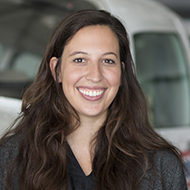Simply stunning
Flying the islands with Oahu’s Pacific Flight Academy
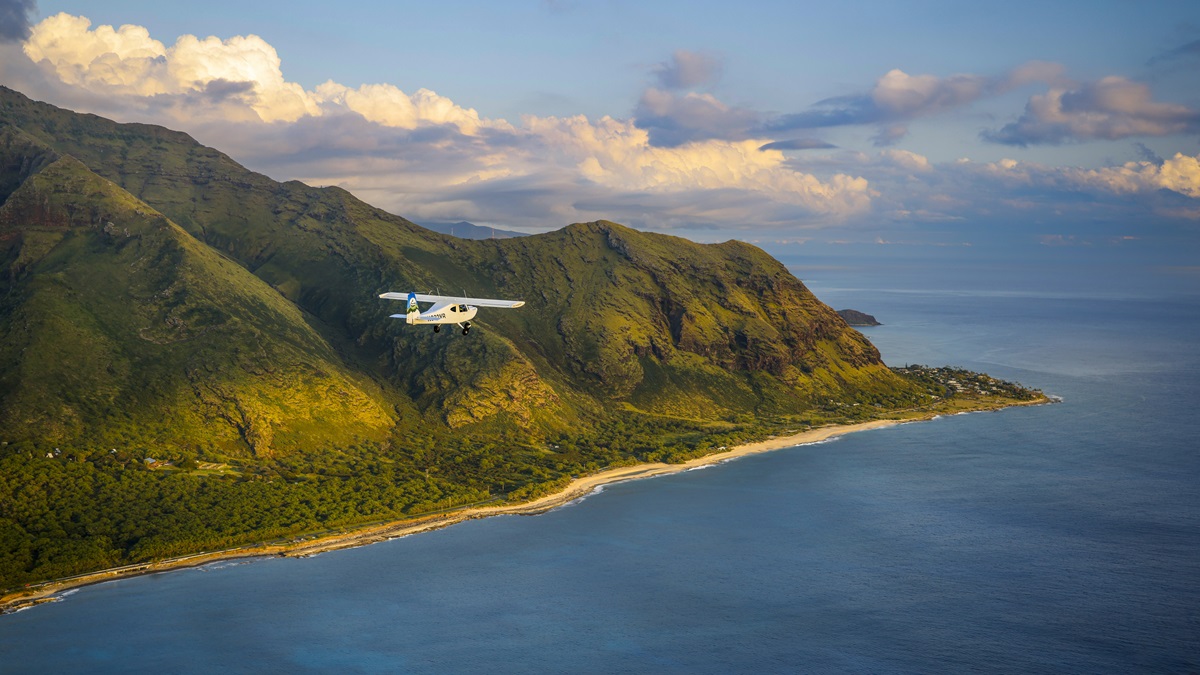
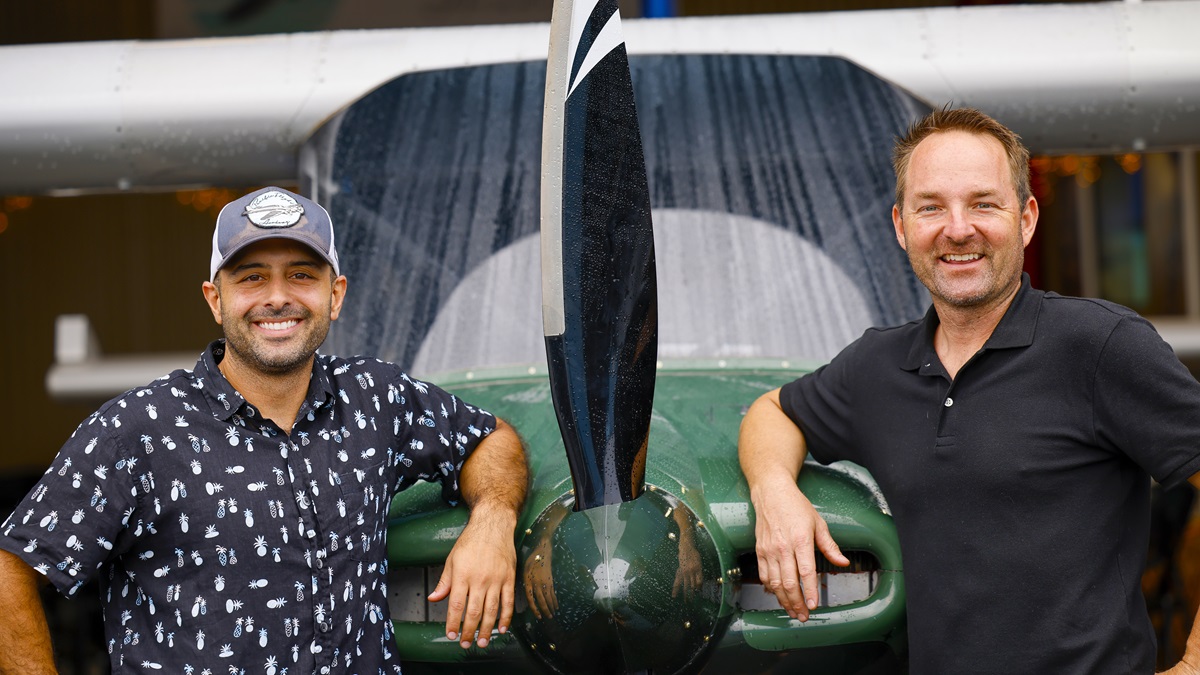
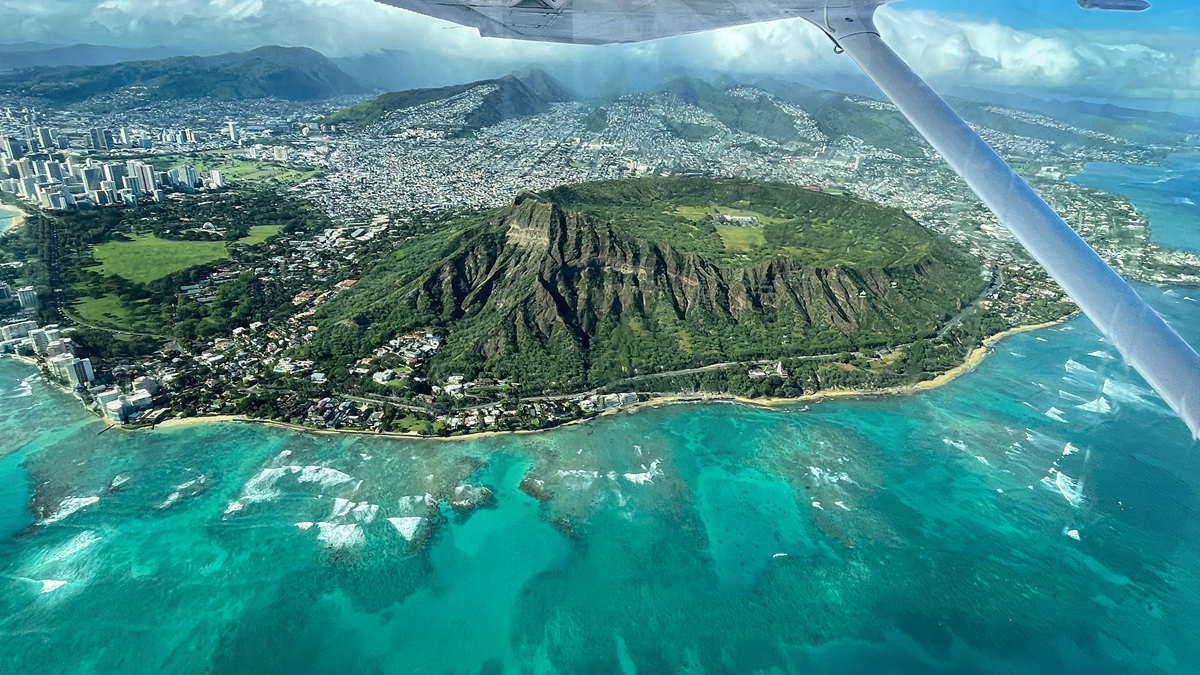
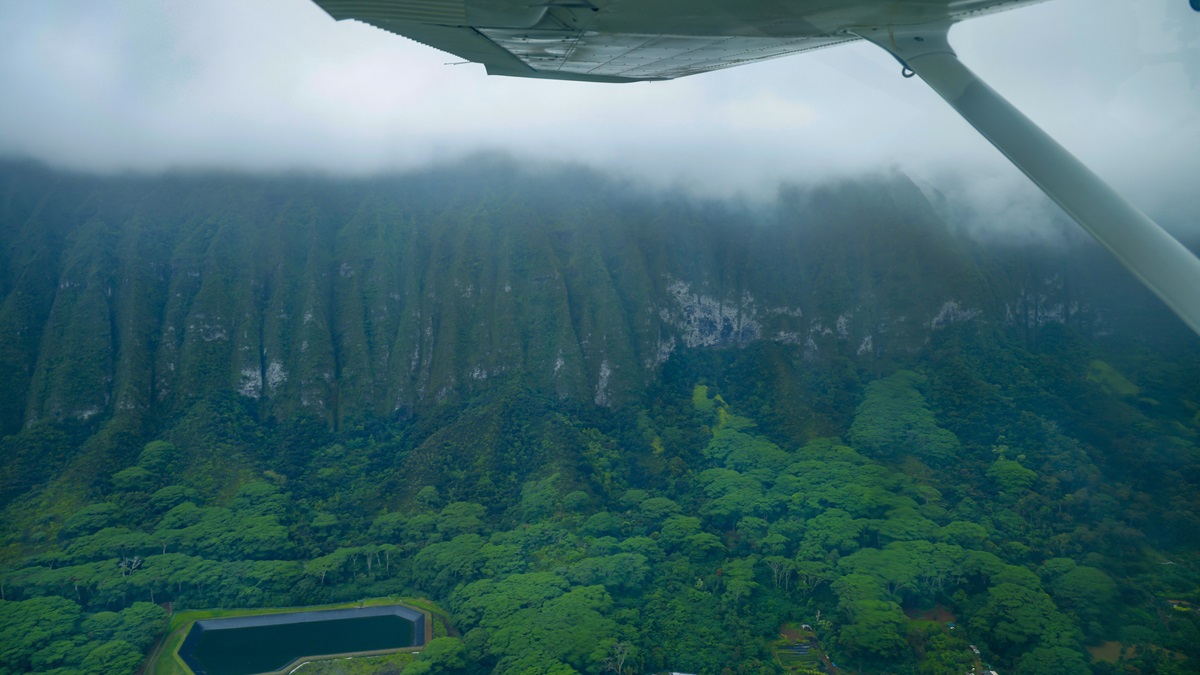
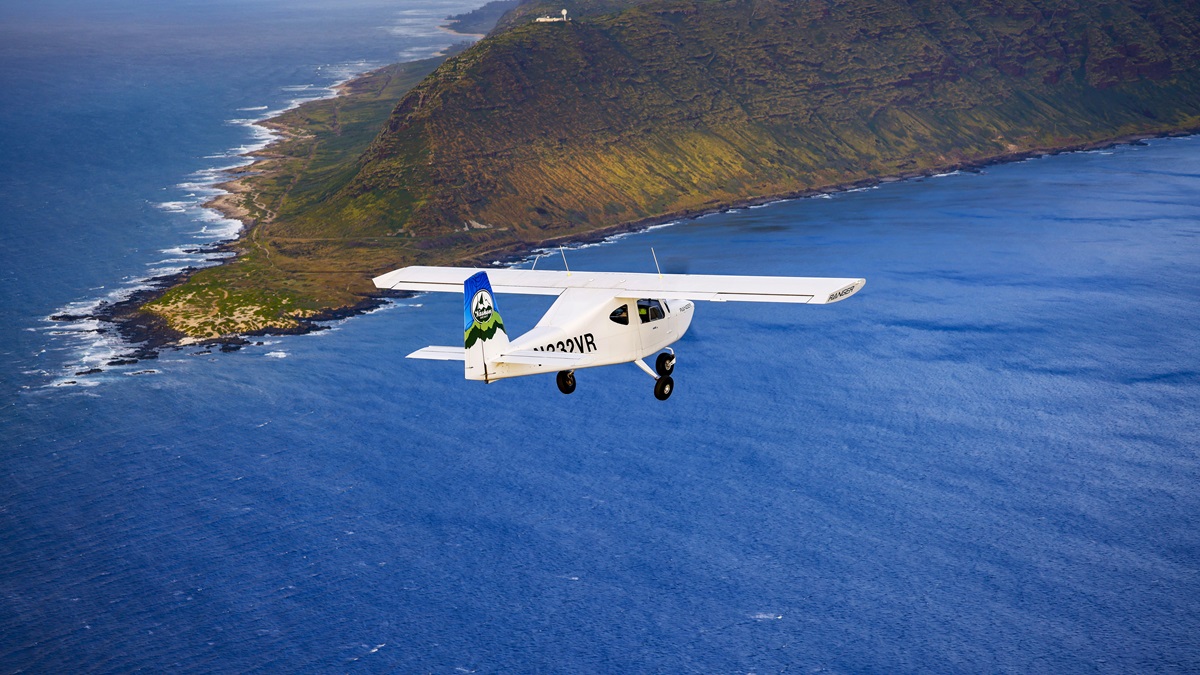
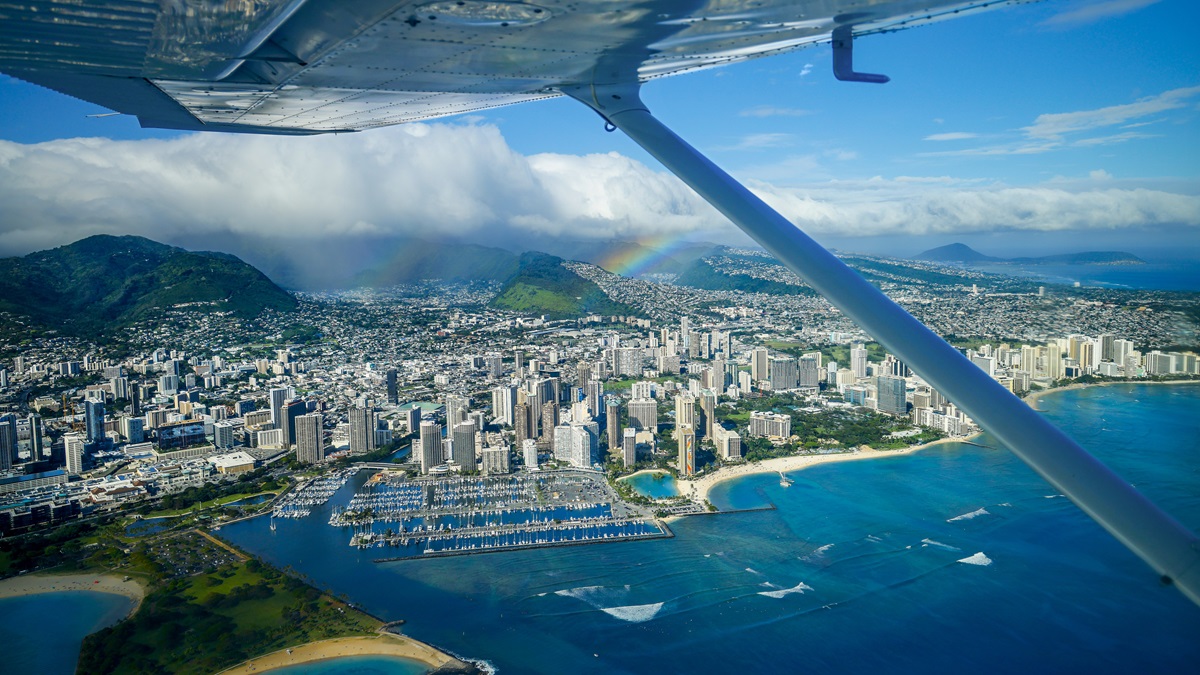
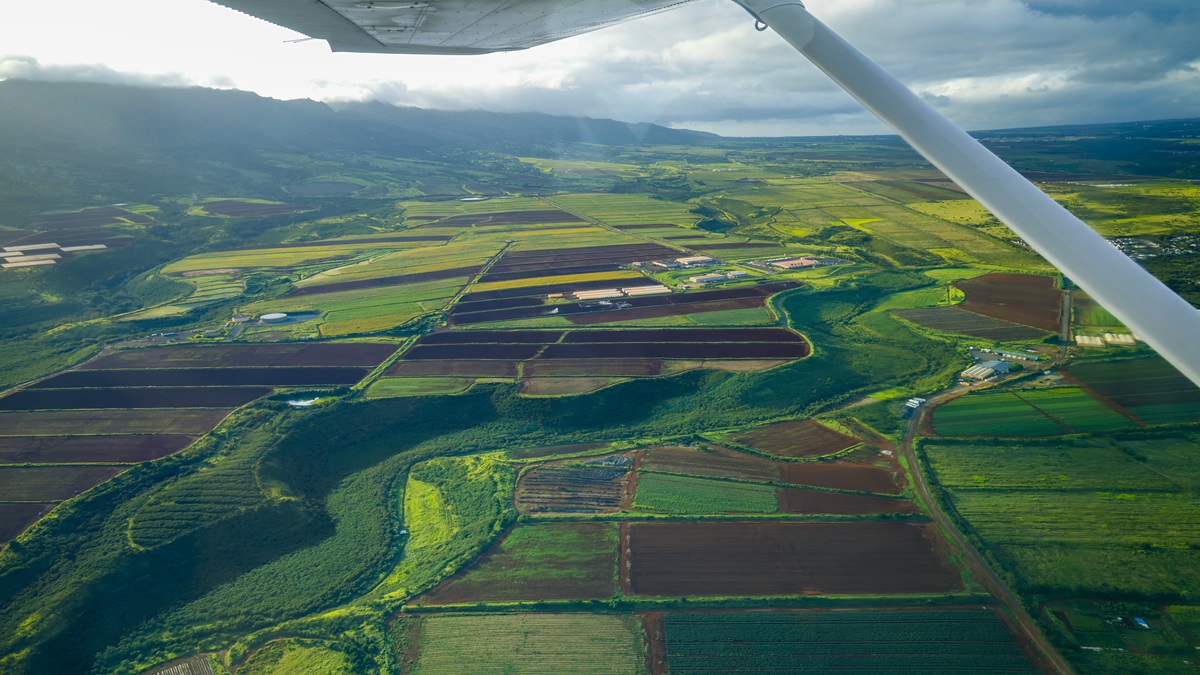
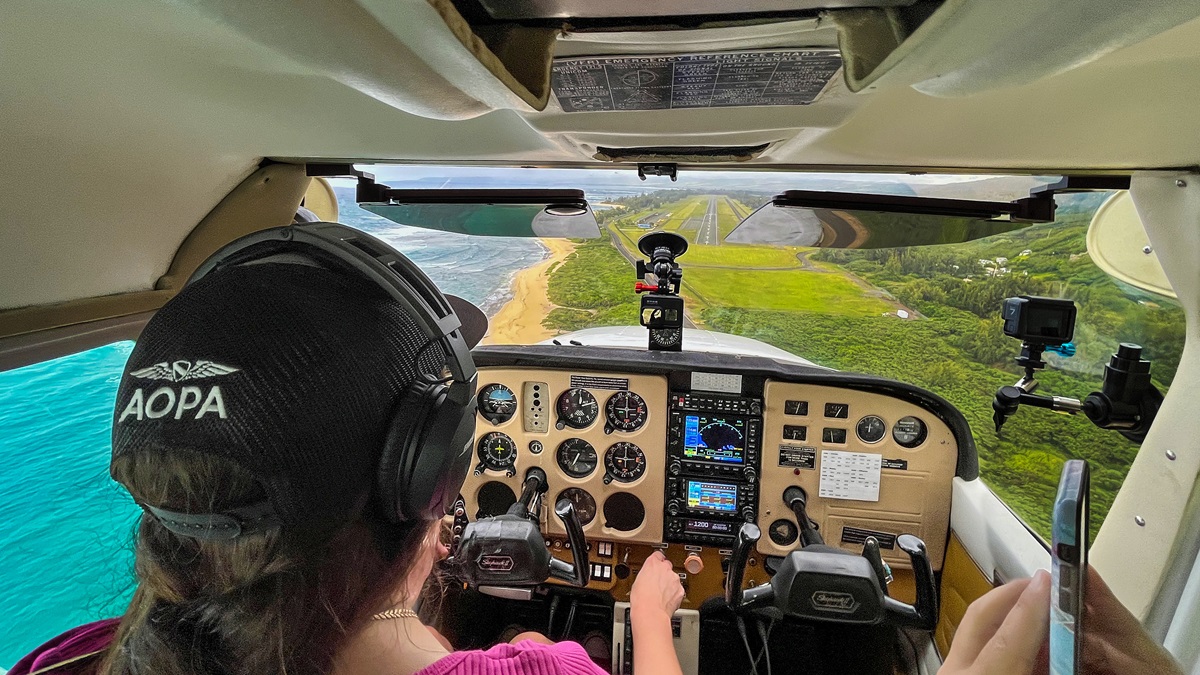
Pilots Bobby Nikkhoo and Morgen Jackson co-founded Pacific Flight Academy at Honolulu’s Daniel K. Inouye International Airport (HNL) about two and a half years ago. “We actually started as a flying club [with] one light sport aircraft here…and the demand was overwhelming,” says Jackson. “We’ve just been trying to grow ever since.”
Starting a business in a pandemic isn’t for everyone, but surprisingly, general aviation boomed during lockdown. “We were lucky that there was an irresistible demand for flight training, so the fleet kind of naturally grew as the phone kept ringing, and it was strange because everything around us seemed to be shutting down,” says Nikkhoo. “I think we added one plane a month for the first 10 months of our existence.”
Pacific Flight Academy is a flight school like most others, but the reality of flying in Hawaii is anything but average. “We’re in the middle of the Pacific Ocean, 2,000 miles away from anything resembling mainland. So, with that there’s tropical considerations, wind, weather. We have mountainous terrain, which varies [and] microclimates all throughout the islands.…It can be completely stormy and rainy on one side of the island and you know, desert on the other side, just complete bone dry…[and] overwater flying, which most people are scared [to do], here we do it—”
“All day, every day,” adds Jackson.
“—for breakfast,” Nikkhoo says.
“And we are located in the heart of the Class Bravo,” says Nikkhoo. “So, with that comes all sort of procedures and regulations, communications, radio work.” Contending with all these factors, Jackson and Nikkhoo agree, prepares their students for a future in any realm of aviation they may choose to pursue.
In addition to the GA traffic typical of any airport on the mainland, the whine of jet engines from cargo Boeing 747s and air carrier 737 Max 8s mixes with the constant whop-whop-whop of MD 500 and Robinson R44 helicopter tour traffic, occasionally accompanied by the whistle of fighter jets flying in from nearby Hickam Air Force Base.
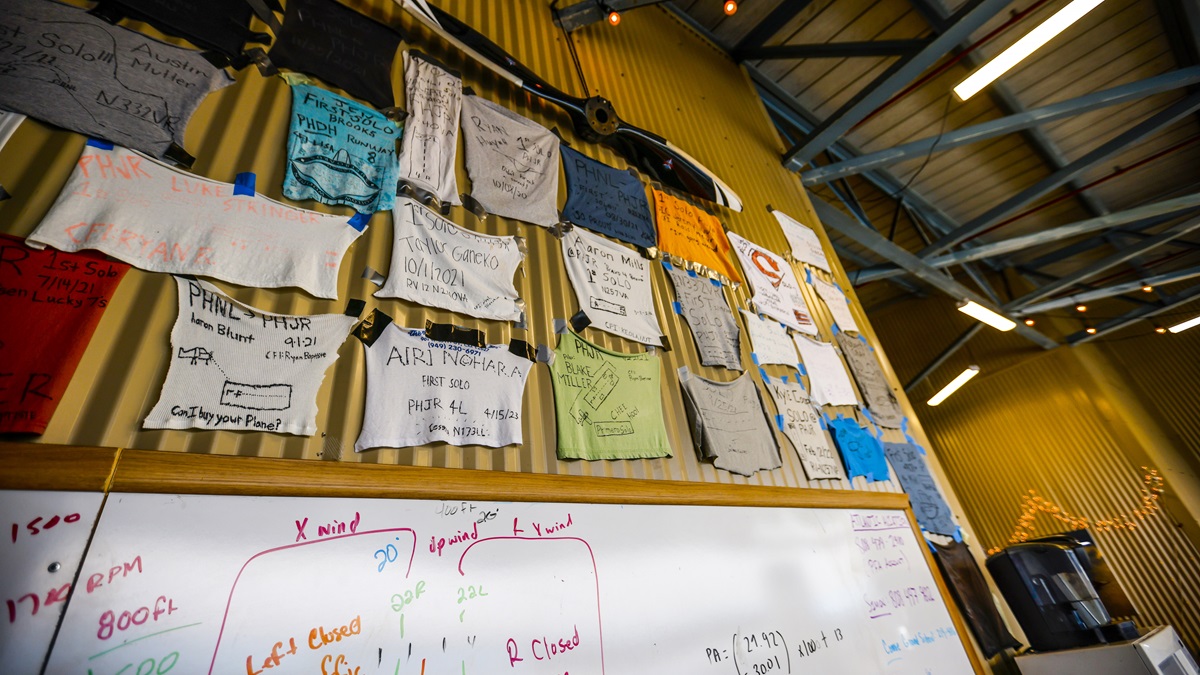
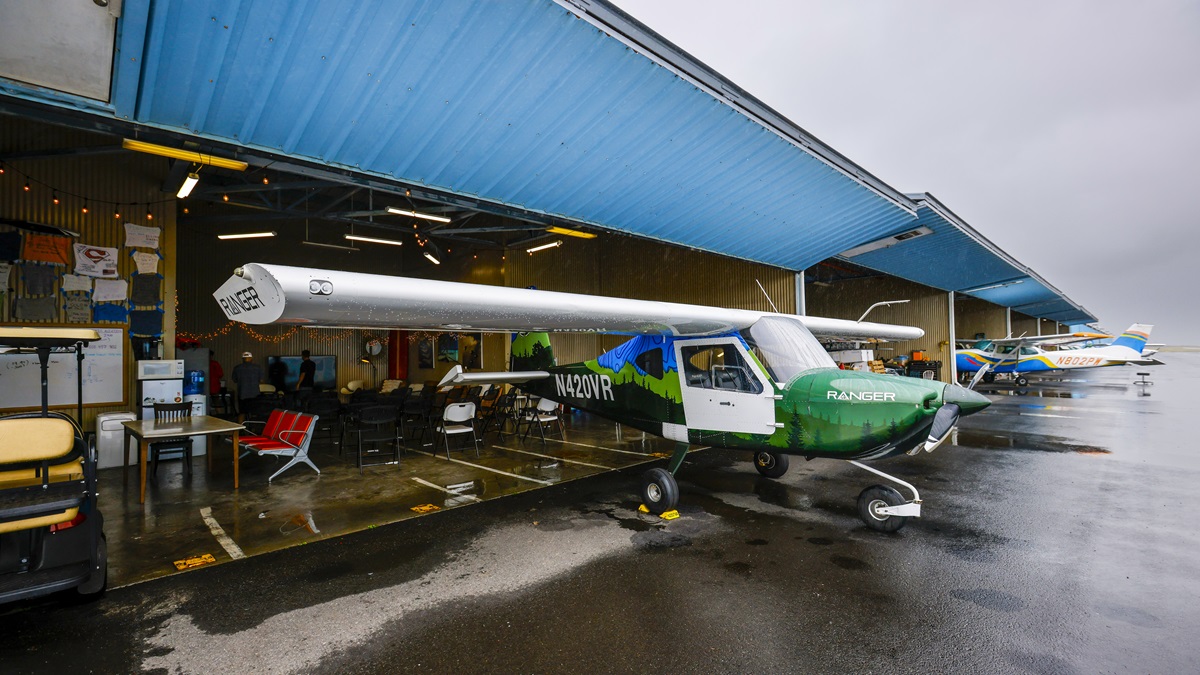
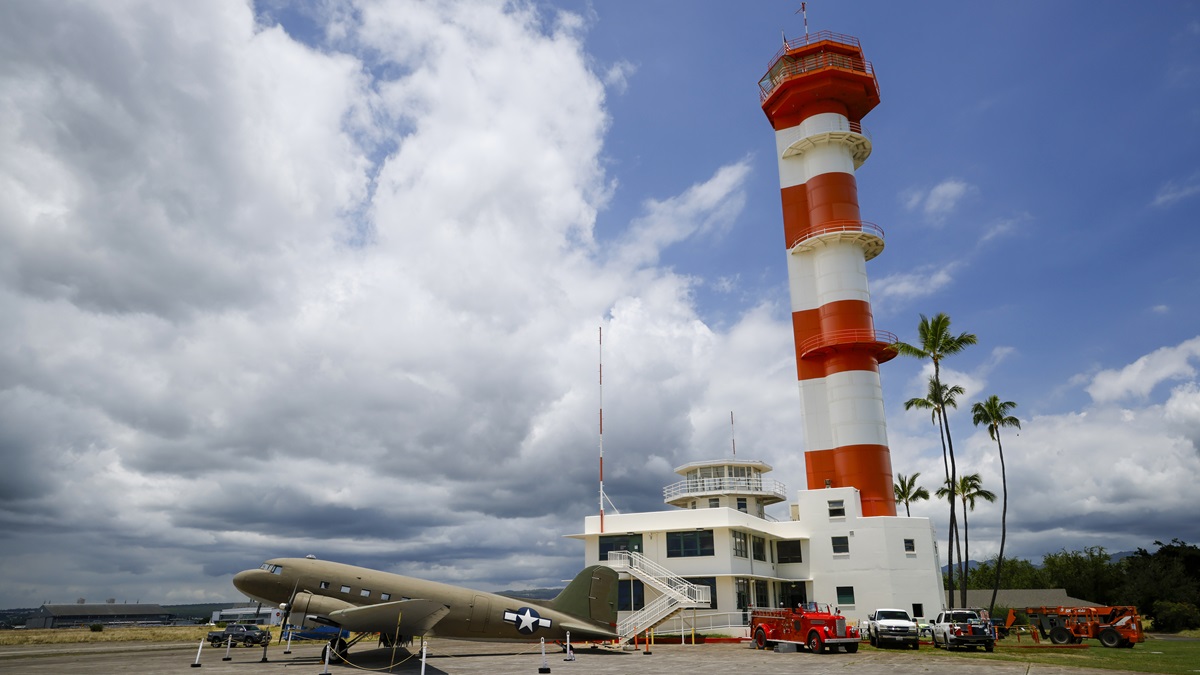
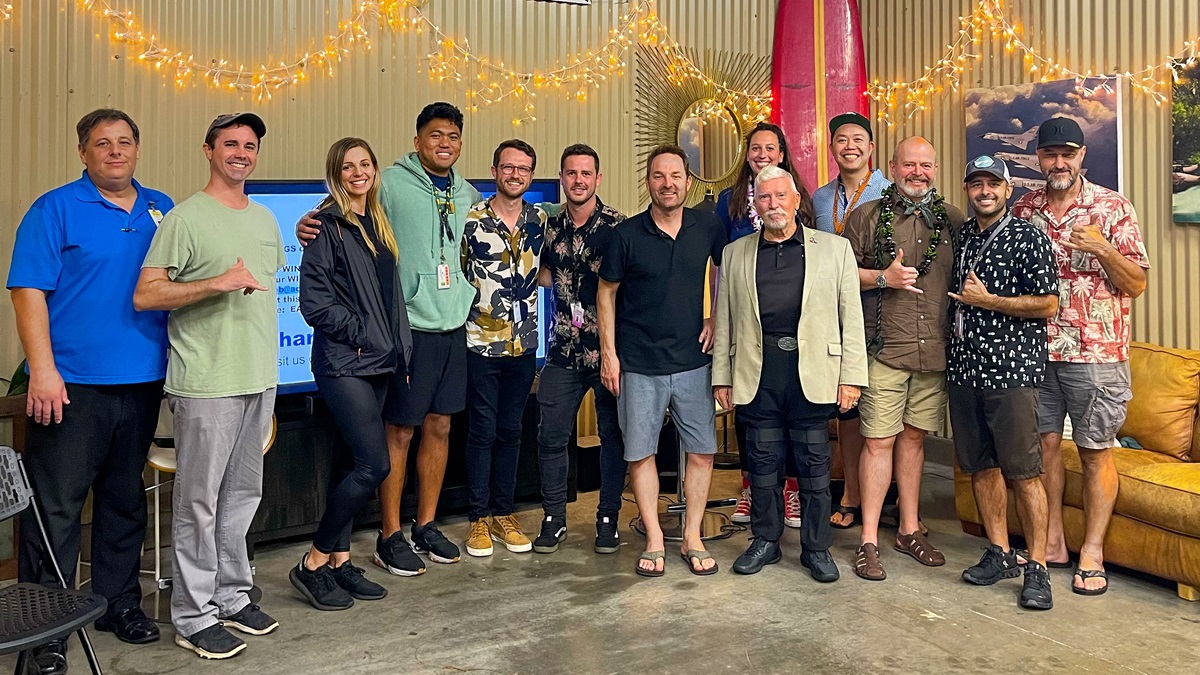
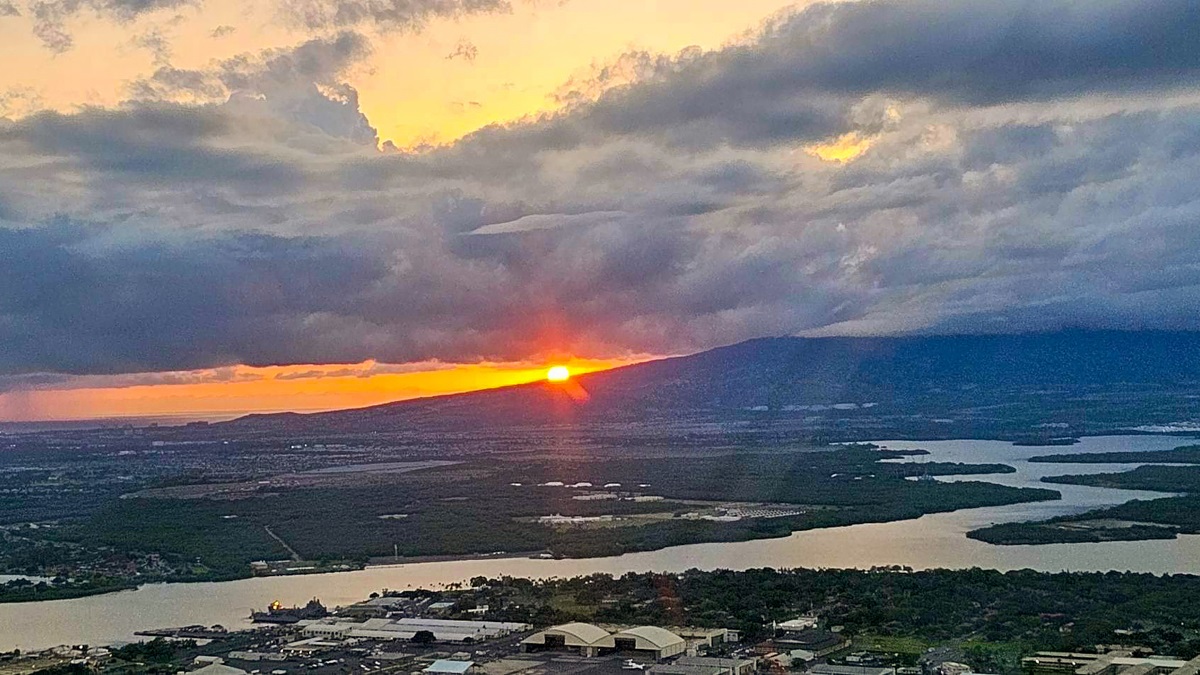
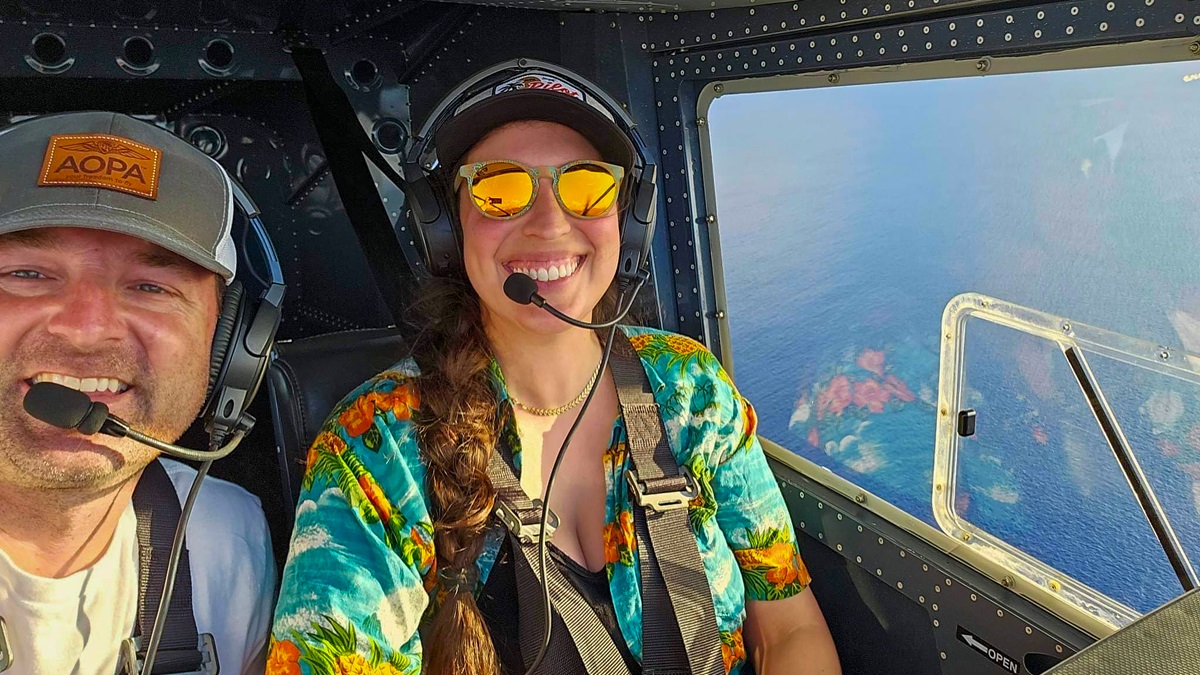
Now with a fleet of four Cessna 172s, two Vashon Rangers, and two Van’s RV–12s, Pacific Flight Academy is busier than ever. “We have over 100 students, about 20 instructors and we’re expanding our fleet pretty rapidly,” says Nikkhoo. Jackson adds that it isn’t unusual for each airplane to fly eight to 10 hours a day.
In the air
Chris Rose, AOPA director of photography, and I are getting ready to fly an island tour with Nikkhoo in one of the Cessna 172s. Nikkhoo calls up clearance, then ground, and we’re cleared to taxi and hold short of 4R. After waiting at the hold short for a minute or so, I ask if we should call the tower.
“Oh, no,” he says with a wry smile. “They’ll call us.” About five minutes later tower clears us across 4R and to line up and wait on 4L before clearing our VFR departure.
Right after takeoff, a rainbow materializes off the nose and follows along the wing toward downtown Honolulu and Waikiki Beach. Even about a mile from the shore we can see all the way to the bottom of the sea, ink blots of coral the only break in the blue. We see the sunken caldera of Diamond Head, now lush and host to a visitor center and hiking trails.
We turn the corner and pass Koko Head, another taller caldera, where cliffs cascade from the peak to the sea like folds of fabric on a marble statue. This shift from the south-facing side to the windward, east side of the island has led us to rain and overcast skies. Clouds obscure the mountain peaks in the Jurassic Valley, where they filmed shows like Lost and Hawaii Five-O, and of course, the movie Jurassic Park.
Turning over the north shore, the terrain turns from lava rock to farmland. Legendary big waves roll in beneath us at Banzai Pipeline, Sunset Beach, and Waimea Bay. In the distance, the 9,000-foot runway of Dillingham Airfield (PHDH) gleams, and we set up for a left downwind for Runway 8. A yellow gyrocopter takes off while we’re on downwind, and the base turn points us right at more verdant cliffs that make me instinctively want to turn away and dog-leg the final. Even on this relatively calm day, the windsock points at an angle across the runway, yet we touch down smoothly in a left crosswind. Taxiing to the ramp, Rose tells me to look out the window. A truck keeps pace with us, and a little girl waves out the window. We all wave back until the road turns and the truck drives away.
Originally named Mokuleia Airfield when it was built by the U.S. Army in 1941, the recently embattled airport was renamed Dillingham Airfield in 1945 for a B–29 airman killed in action over Japan. Officially now listed by Hawaii’s DOT as Kawaihapai Airfield (although still Dillingham on FAA publications), it recently survived a closure threat thanks to coordinated efforts from local airport supporters and AOPA advocacy.
After a quick walk around the field, we start up and depart, offsetting over the ocean before turning onto a downwind to continue our island tour. Climbing up with Dillingham behind us, we check out the most western part of the island, Kaena Point, before turning down the coast toward Honolulu. The second we get on the other side of the point, the bumps begin.
“And now we’re on the windy side,” says Nikkhoo. It smooths out once we climb a little more, and the soon-to-set sun paints the coast in golden light. A rainbow halos almost all the way around us, and there’s even a hint of a double rainbow for a few seconds before it dissipates.
“This side of the island is really beautiful, and it’s also super local,” says Nikkhoo, noting that visitors will likely find a better welcome in the touristic areas than on the west coast. Nikkhoo points out the power plant ahead and on the coast that essentially, he tells us, powers the whole island. At the power plant we’ll also plan to begin our turn inland and back into Honolulu.
Nikkhoo, who beside being a co-founder of the flight school is also an airline pilot, is sharp on the radios, and we get cleared in with ease. Despite what the chart might lead you to believe—there’s an intimidating “for reasons of national security” request to avoid flying over Pearl Harbor on the chart—we are advised to approach the field over Ford Island. When we ask for even more privileges, to circle Ford Island for photo work, it's approved, to my surprise.
“It’s pretty common,” says Nikkhoo. “And it sounds really quiet on the radio right now and that’s not common, so maybe it’s just perfect timing.”
The white memorials for each ship lost on December 7, 1941, line the island, and we fly over the official bookends of United States involvement in World War II: the USS Arizona, the entry, and just a few hundred yards away, the USS Missouri, where Hirohito signed the unconditional surrender. It’s somber to witness, and with an airplane to fly, there’s no mental space to fully process it until we’re on the ground.
Leaving Ford Island behind, we enter a modified base for 4L, touch down uneventfully, and taxi home.
Into the future
Back in the hangar, solo shirts line the wall and a longboard rests in the corner. Mechanics take the doors off one of the Vashon Rangers in preparation for a photo flight tomorrow. Light sport aircraft like Rangers rather than the 172 we just flew represent the future of the fleet. The choice, like everything else about their operation, is driven by location.
“We operate a pretty diverse fleet….And with hundreds and hundreds of flight hours happening every month you kind of learn what works [and] what doesn’t,” says Jackson.
“Shipping parts out here is a huge expense, especially if you need something overnighted. You can often times spend multiples of what the part cost is just to get something out here in time, and that has to be balanced against losing flights and cancelling and delays and what not.”
“On top of that, fuel out here is very expensive because it has to be shipped out here in ISO tanks. And so, when you’re paying $10 a gallon for avgas and we can switch to $4-a-gallon mogas—all four of our Skyhawks can burn mogas—not only does that help with the lead and the longevity of the engines, it’s a huge cost savings that we can use for upgrades and new acquisitions and to pay for the new fleet.”
It seems clear that the expensive-to-maintain 172s and Rangers, even with mogas-capable engines, will soon be a tool of the past.
“The future of our fleet is going to be all composite. Partly for maintenance reasons and partly because I think it’s the future of construction,” says Jackson. And they’re not going for just any composite airplane, either—they took the “wildly unusual step” of building their own light sport.
“The Saberwing is an all-composite, low wing two-seater and we’re actually certifying the engine that’s going in it…You will simply have a push-to-start engine with a single power lever…and it’ll do everything you want your airplane to do while sipping mogas.”
“The airframe is simple, we’ve engineered out a lot of the parts, most of the parts are just off the shelf replaceable rather than needing a specialized set of skills…that are on short supply on this island. Most of the A&Ps and mechanics here work for the big airlines and the ones that really know how to keep the old, certificated airplanes alive, they’re retiring and they’re very hard to come by, so the Saberwing I think is going to do that really well for us.”
Jackson shows us videos on his phone of a recent engine test, and when he does, the light in his eyes is as bright as if he were showing us a child’s first steps. He and Nikkhoo can’t stop smiling; they plan to have the first Saberwings to Honolulu within the next couple months under an R&D certificate, and pending success, introduce them to the fleet as S-LSAs.
“We’re very excited,” Jackson says.
Until we meet again
The following evening, we head out in the two Rangers for a photo flight. HNL doesn’t allow formation takeoffs, so we plan to form up over Haleiwa, a small town on the north shore that’s east of Dillingham and west of Pipeline. We hold for a Royal Australian Air Force 767 heavy, then taxi over to the now-familiar 4L.
After departure, we follow the valley north over patchwork pineapple fields and their rich red soil before hooking left over the north shore to catch the west coast’s light. Every flight is memorable in its own way, and this one seems particularly special: How rare it is to fly over one of the most isolated, beautiful, unusual places on Earth, for the first time yesterday, and possibly for the last time right now.
In the tropics there are no lingering, slow summer sunsets, and all too soon we lose the light and head back to HNL. When tower has us go around for spacing, neither Jackson nor I mind—now we get to see the sun dip below the horizon, and with one last glimpse of the waves, the mountains, and the tall candy cane tower on Ford Island, we make it a full stop.
Like all great trips, this visit was just long enough to leave us wanting more. And so instead of goodbye, a hui hou, Hawaii, until we meet again.
